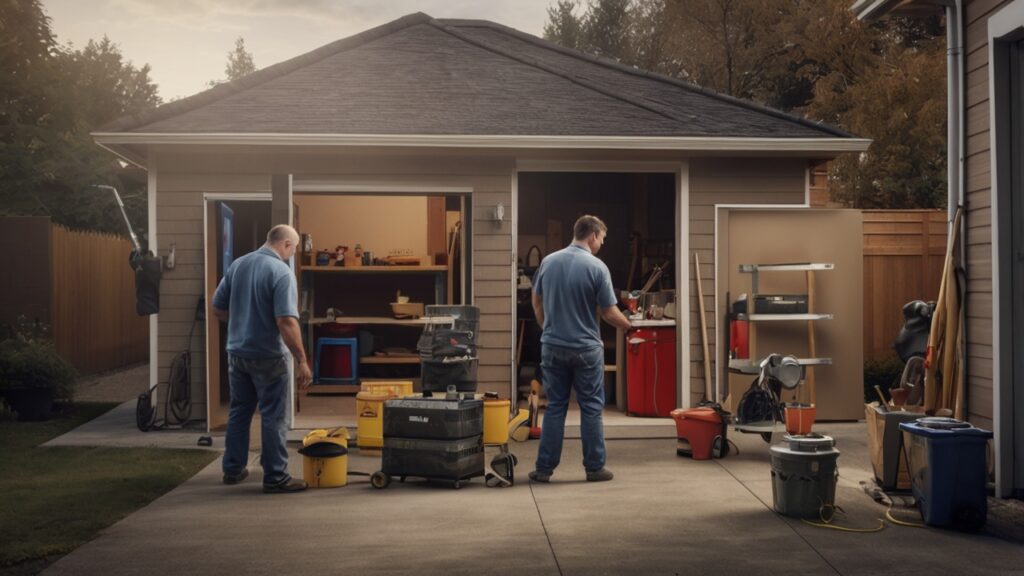When people suddenly notice their garage door acting weird, one of the first questions that comes up is how to know if your garage door spring is broken. And let me say this right away: a broken spring is not just a minor inconvenience. It’s a real safety hazard. I’ve seen cases where homeowners tried to “give it a shot” with DIY tools, and it didn’t end well—broken fingers, damaged cars, or worse.
This article is not about teaching you how to fix the spring yourself. Nope. It’s only about helping you recognize the warning signs, understanding the danger, and making the smart decision to call a trusted professional. Because garage door springs hold massive tension, and when they snap, it’s like releasing a coiled-up beast.
Signs of a Broken Garage Door Spring
Now, let’s talk about what you might notice if your spring has given up. These signs are pretty universal, although every case has its own quirks.
1. A loud snapping noise.
People often describe it like a gunshot or firecracker. If you’re inside the house and suddenly hear a sharp bang from the garage, chances are high that the spring has broken. I remember a client in Durham who thought someone had broken into their garage at night. Turned out it was the spring.
2. The door won’t open with the opener.
Even the most powerful openers can’t lift a door with a broken spring. You’ll hear the motor struggling, humming, or clicking, but the door barely moves. Don’t push it—it’s not worth burning out your opener too.
3. The door feels extremely heavy.
If you try to lift the garage door manually, it feels like dead weight. That’s because the spring’s job is to counterbalance the door’s weight. When it’s gone, you’re basically trying to lift a few hundred pounds on your own.
4. A visible gap in the spring.
This one is pretty obvious. If you look above the door and see a gap in the coil of the torsion spring, it’s broken. Extension springs might hang loose or look stretched out. If you see this, don’t touch it—just step back.
The Danger of a Broken Spring
Why is this such a big deal? Because the spring is literally the muscle of the garage door system. Without it, everything else becomes unstable.
- A falling door can crush anything in its path, from your car to a person.
- Attempting a repair without the right tools (torsion bars, winding cones, heavy-duty clamps) can result in serious injury.
- Even if you manage to “patch it,” misalignment often leads to further damage to tracks, rollers, and the opener itself.
I once spoke with a garage door specialist who put it bluntly: “A broken spring is one of the top causes of emergency calls. It’s not about whether you can fix it—it’s about whether you’ll walk away unharmed if you try.”
What to Do Next
Okay, so you’ve identified the signs. Now what? Here’s the simple truth: do not try to fix it yourself.
Instead:
- Call a professional garage door company in your area. Look for words like trusted, reliable, expert, best.
- Ask them about replacement options. Springs come in different sizes, life cycles (measured in “cycles”), and quality levels. Professionals will match the right spring to your door weight.
- While waiting, keep the door closed. Don’t try to force it open—it’s safer to leave your car outside for a day than risk the damage.
For those in North Carolina, you can check out this guide: 5 Professional Garage Door Services Recommendation in Durham, NC. It lists some of the most reliable local experts who can handle this exact issue.
Case Example: A Homeowner in Durham
Let me share a quick real-life story. A homeowner in Durham once called after their garage door slammed shut and wouldn’t open. They admitted they almost tried lifting it themselves. Instead, they called a pro. Turns out both springs had worn out at the same time (common in older doors). The technician replaced them with high-cycle springs, lubricated the system, and balanced the door. Not only did the door work smoother, but it became much quieter.
That’s the peace of mind you get when you leave it to the experts.
If you’re wondering how to tell if garage door spring is broken, remember these signs: a loud snap, heavy door, opener failure, and visible gaps in the spring. But don’t let curiosity tempt you into fixing it. Garage door springs are dangerous—period.
The smartest move is to call a professional. You’ll save time, protect your property, and, most importantly, keep yourself safe. Trusted repair services are only a phone call away.
Need more trusted tips? Visit our homepage for expert advice and local service recommendations.
FAQs
1. Can I open my garage door with a broken spring?
Technically yes, but it’s unsafe. The opener might strain and the door could slam shut unexpectedly. It’s best to leave it closed until repaired.
2. How long do garage door springs usually last?
Most last about 10,000 cycles (a cycle is one open and close). High-cycle springs can last 20,000 cycles or more with proper maintenance.
3. How much does spring replacement cost?
It varies by spring type and door size, but in most cases you’re looking at $200–$400 including labor. Always ask for a warranty on parts and service.
If you found this article useful, please share it with friends or family using the social media buttons below. You never know who might be struggling with the same problem.


